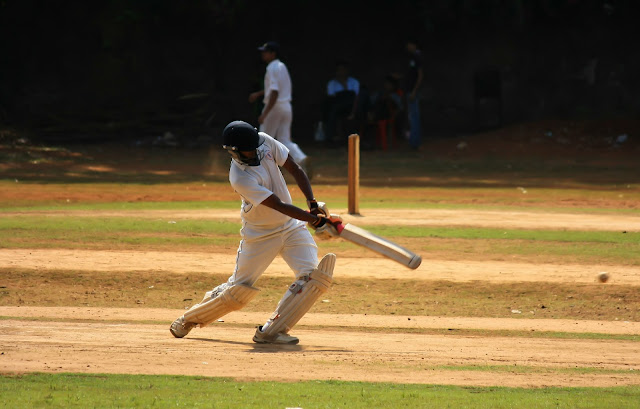Caribbean Games - Part 3: Cricket
Caribbean Games is a series that is focused on highlighting games indigenous to the islands of the Caribbean. GamePyong will explore various local and regional games and pastimes, derive inspiration from them and create games based on them.
The Gentleman's Game with a Twist
Play the game we built for this blog post here: Play Quicket
UPDATE - Quicket has been released on the Google Play Store: Quicket App
UPDATE - Quicket has been released on the Google Play Store: Quicket App
Cricket was brought to Trinidad around the late 1790's by the British and would go on to become one of the most popular sports played locally to this day. It is a bat-and-ball game which has 11 players per team. The game is played on a rectangular pitch surrounded by an oval-shaped field. One team tries to score as many runs as possible by hitting the ball while the other team tries to restrict the scoring of runs and get all of the players out. Once a team has been bowled out, the teams swap roles. The team that has amassed the higher score after both have been allowed to bat is declared the winner.
In Trinidad, playing cricket is instilled into both boys and girls at a very young age with the game being played in almost every primary and secondary school at recess and lunch time. We at GamePyong have fond memories of playing the wind-ball version of the game, especially at beach limes. There are many digital cricket games for PC out there including International Cricket 2010 and Brian Lara International Cricket 2007. There are even some for smart phones such as World Championship Cricket. All of them deliver basically the same gameplay. We wanted to approach this game from a different angle altogether. What if you could merge the game of cricket with a puzzle game like Candy Crush? What would that look like? Read on to see what we came up with.
The Game
Quicket (a quick version of cricket) was built using Phaser. It focuses on the batting team's gameplay. The game is split into 2 areas as shown above. The top half of the screen shows a simulation of the cricket match. The bottom half contains the puzzle grid. The puzzle grid utilizes a drag-and-match mechanic similar to games such as 10000000. The puzzle engine was based on a tutorial by Emanuele Feronato. Players can drag any row or column either horizontally or vertically. If 3 or more tiles or the same type line up, the tiles are removed and new tiles fall to fill the spaces. For this game, the tiles are as follows:
- 1 Run - scores a single run
- 2 Runs - scores 2 runs
- 4 Runs - scores a 4
- 6 Runs - scores a 6
- Wide - gives an extra run and balls
- Wicket - dismisses the current batsman
The aim of the game is to get as many runs as possible before the remaining balls are depleted. The number of balls left is shown in the bottom right corner of the upper half of the screen. Every time a tile is matched, a ball is used up. The 'wide' tiles are therefore very important as they give extra balls. If more than 3 tiles are matched, a bonus is given (extra runs for run tiles and more balls for wide tiles). The rules of the game are summarized below:
The top half of the screen reacts to whatever happens in the puzzle grid. It shows animations for runs, wickets etc. The game ends when either the number of balls runs out or 11 wickets fall. We intend to expand this game further to include more features in the future, as well as release versions for the various app stores. Until then, you can try out Quicket below in your mobile or desktop browser.
Try the game built for this post here: Play Quicket
UPDATE - Quicket has been released on the Google Play Store! Download the game for Android phones here:

UPDATE - Quicket has been released on the Google Play Store! Download the game for Android phones here:







I am really happy to say it’s an interesting post to read. I learn new information from your article, you are doing a great job. Keep it up.
ReplyDeleteFantasy Cricket Software Development
Informative post.
ReplyDeleteStudy Abroad Consultants